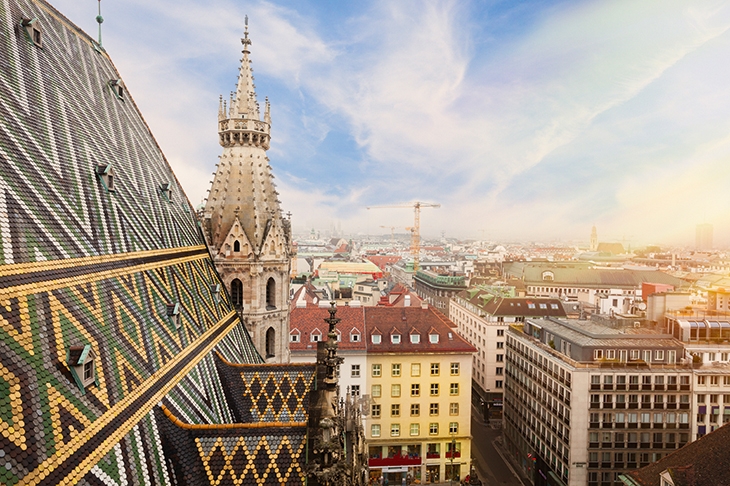Two things always strike me when I visit Vienna. The first is how easterly the city lies. This was more apparent last century, when on maps of Europe the silhouette of Austria poked itself like a swollen proboscis into the dark shadows of the eastern bloc. But even today, with Bratislava, Brno and Gyor as its closest international neighbours, it’s a good reminder of how much ‘western European’ culture comes from quite far east.
The second thing is how at home there I feel. The names and faces on the billboards are conductors and pianists, stars of opera and ballet. For once, you get the feeling celebrity is selling something worth buying. There are stars on the pavements, as in Hollywood, but the twinkling immortals are all composers, making your arrival in the city feel like a spiritual homecoming.
As a tourist destination, Vienna’s greatest problem is that it’s a tourist destination. Which is to say, the city can feel less like a city with museums than a museum itself, full of people seeking to flee the 21st century in the company of the 50 gilded topless women who prop up the Musikverein balcony. But today’s Vienna actually has as buzzing a contemporary arts scene as any European city. For this, though, you’ll need to venture beyond the Ringstrasse, the grandly planned ring road which from the 1880s began to replace the medieval city walls with imposing chains of grand houses and public buildings.
Among them are the twin palaces of the Kunsthistorisches and Naturhistorisches Museums, which face each other off over the formal gardens of the Maria–Theresien Platz, with a handsome bronze of the enthroned empress herself presiding. Her former stables lie just beyond the Ringstrasse and 20 years ago were converted, together with the surrounding area, into a modern museum district, home to the Leopold Museum and ‘mumok’ (museums of modern and contemporary art) as well as the annual exhibition Wiener Festwochen, which takes place in May and June.
The life of the Museumsquartier is enhanced by the presence of subsidised artists’ studios and there’s a feeling of things happening, as opposed to having happened. That said, the focus this year is all on what happened 100 years ago, when the city’s two most famous modern painters, Egon Schiele and Gustav Klimt, died within months of each other. Schiele is well served by the Leopold Museum’s exhibition, focusing on his ‘expressionist years’ (he was only 28 when he died, so that’s pretty much his entire career).
Klimt’s ‘The Kiss’, perhaps his most famous image, hangs across town in the Belvedere, where two exhibitions looking at both artists’ influence on modernism will open in the spring (Klimt) and autumn (Schiele). Also worthwhile is the Kunst-historisches Museum’s exhibition ‘Stairway to Klimt’ (until September), with its close-up view of the 13 paintings that usually hang high above the grand staircase, including the full-frontal ‘Nuda Veritas’ of 1899.
If that’s not your idea of the place to be, the city’s Jewish Museum has an exhibition about the hostesses whose salon culture allowed Schiele and Klimt’s art to flourish. Appropriately enough, the exhibition’s name is ‘The Place To Be’.





Comments